Tiles can be a game-changing addition to your living room, elevating its functionality and aesthetic appeal. They offer endless possibilities, from creating a classic, elegant atmosphere to achieving a more modern, sleek look.
But with a vast array of options, making the right choice can be daunting. Let’s delve into the different types of tiles you can choose for your living room and how to select the perfect one.
What Types of Tiles Are There for the Living Room?
Tiles come in many materials, each with unique features that cater to various requirements and tastes.
- Porcelain Tiles: Known for their durability and low maintenance, these are ideal for high-traffic areas.
- Ceramic Tiles: These offer a range of colors and designs, giving you more aesthetic options.
- Natural Stone Tiles: Including options like marble and slate, these tiles bring the room a luxurious and earthy feel.
- Wood-Look Tiles: These replicate the look of natural wood but are easier to maintain.
- Mosaic Tiles: Small tiles are usually sold in mesh-backed sheets; mosaic tiles are great for creating unique patterns and focal points.
- Concrete Tiles: These offer an industrial look and are well-suited for modern living spaces.
How to Choose the Right Tiles for Your Living Room?
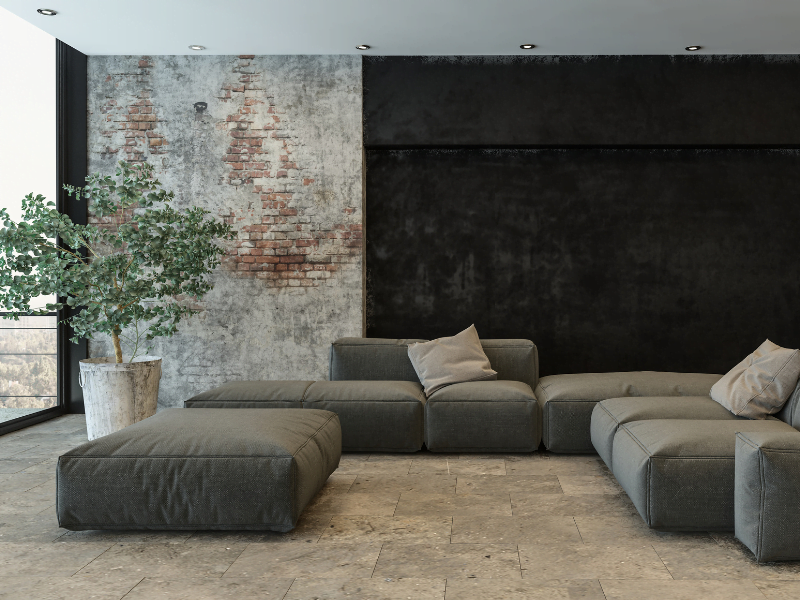
Selecting the right tiles involves multiple factors that ensure the result is visually appealing and practical.
Type of Tile
Determine which tile material aligns with your lifestyle. For instance, porcelain might be more appropriate if you have children or pets due to its durability.
Size and Scale of Room
Consider the dimensions of your living room when picking tile sizes. Larger tiles can make a small room seem more expansive, while smaller tiles are suitable for bigger spaces.
Natural Light
Evaluate how much natural light your living room receives. Light-colored tiles can make a dim room appear brighter, whereas darker tiles give a cozy, intimate feel to a well-lit room.
Personal Style
The tiles should match your style and the overall theme of your home. Whether you prefer a traditional, modern, or eclectic approach, ensure the tiles resonate with your taste.
Budget
Always set a budget before shopping. Different tiles come at varying prices, so knowing what you can afford will streamline the selection process.
Top 5 Tile Ideas for Your Living Room
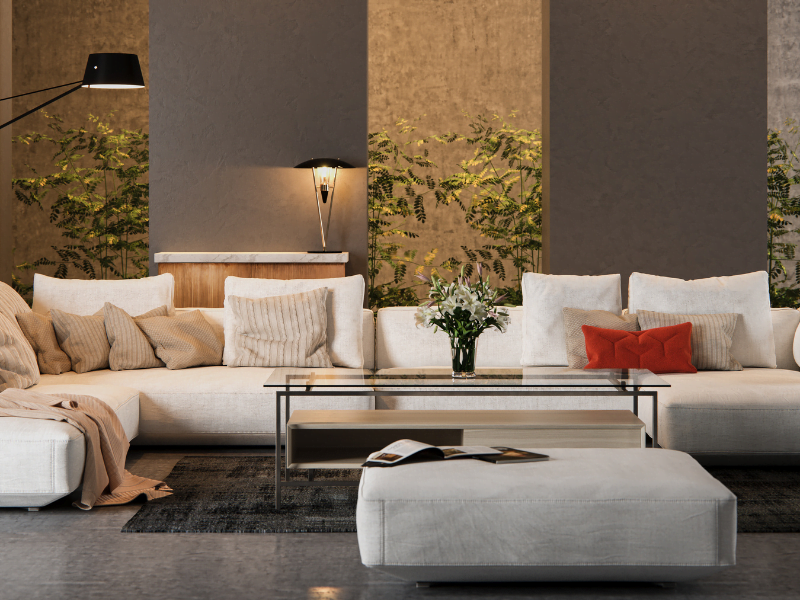
Neutral Tones: Versatility and Balance
Beige and light gray tiles offer a flexible backdrop that adapts easily to different styles and accents. They bring a balanced and serene ambiance to the room.
Features
- Adaptability: One of the major advantages of neutral-colored tiles like beige, cream, or light gray is their adaptability. They can match a wide array of furniture and decor.
- Timeless Appeal: Neutral tones rarely go out of style and provide a long-lasting aesthetic value.
- Low Maintenance: Lighter shades generally require less rigorous cleaning as they do not easily show stains or scuff marks.
Examples
- Matte Cream Porcelain: Provides a soothing effect while being easy to maintain.
- Light Gray Ceramic: Adds a contemporary edge, especially when paired with a slightly darker grout for contrast.
Earthy Shades: Organic Vibes
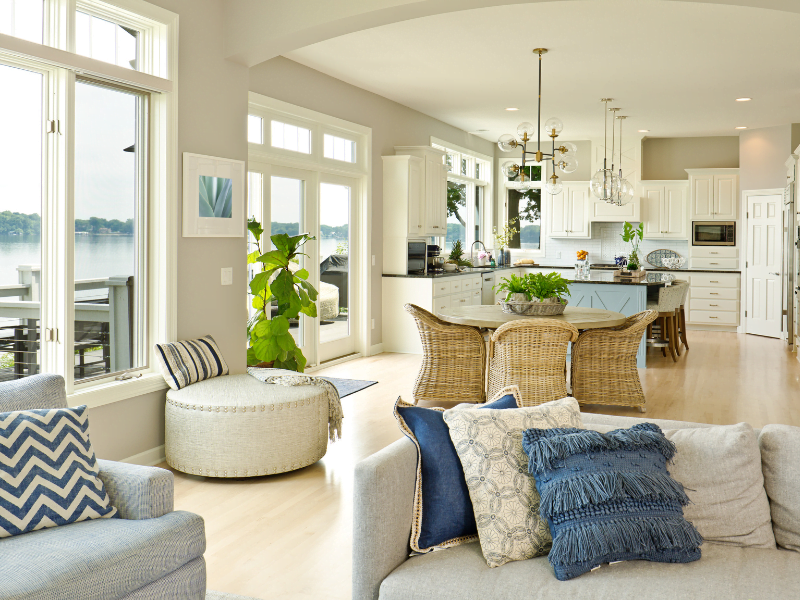
Consider tiles in shades like olive or taupe for a natural, calming environment. They blend exceptionally well with wooden furniture and indoor plants.
Features
- Natural Harmony: Earthy tones like olive, taupe, or terracotta create a natural flow, making your living space feel more organic.
- Texture Variety: These shades often come in textured finishes, offering a more tactile experience.
- Warm Atmosphere: Earthy colors can bring warmth to a room, making it more inviting.
Examples
- Slate in Taupe: Offers a rustic look along with durability.
- Terracotta Ceramic: Adds a Mediterranean or Southwestern flair to the room.
Cool Colors: Freshness and Sophistication
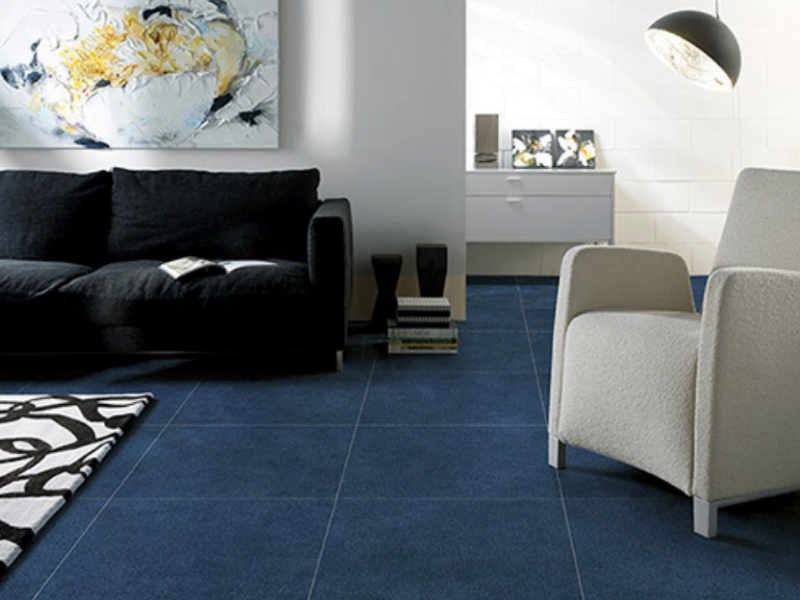
Blue and green tiles can inject a touch of freshness and elegance into your living room. They work wonderfully with both traditional and contemporary decor.
Features
- Depth and Dimension: Shades like blue and green add layers of visual depth, making your room appear more spacious.
- Mood Enhancer: Cool colors evoke feelings of calm and tranquility.
- High-Contrast Options: These tones contrast highly, especially against lighter or wooden furniture.
Examples
- Turquoise Mosaic: This creates a lively focal point, especially as an accent wall.
- Navy Blue Porcelain: Adds a touch of elegance and pairs well with gold or silver accents.
Metallic Accents: Glamour and Shine
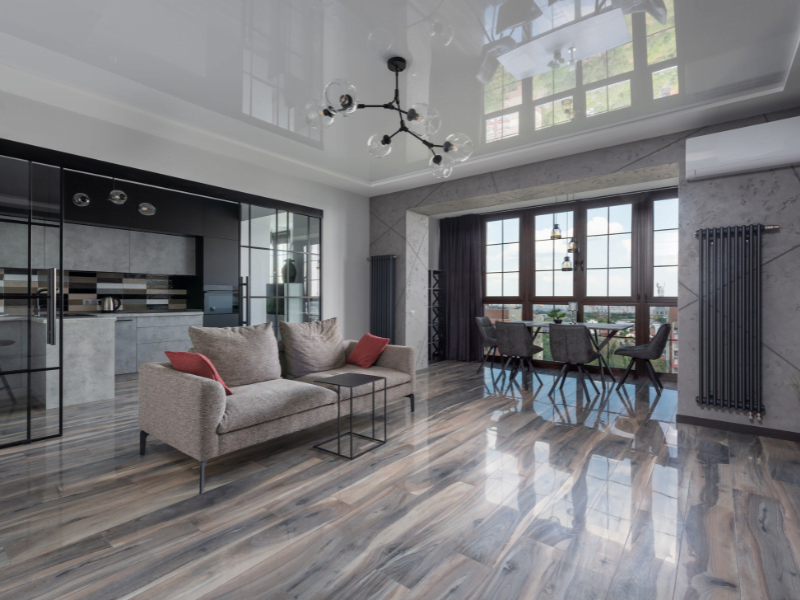
Introduce metallic tiles or accents like gold or silver for a touch of glamour. They can serve as focal points, drawing attention to specific areas.
Features
- Luxurious Aesthetic: Metallic accents immediately add a touch of luxury and opulence.
- Light Reflectivity: The shiny surfaces can brighten up a room by reflecting light.
- Statement Pieces: Even a small number of metallic tiles can make a big impact.
Examples
- Gold-Trimmed Ceramic: Excellent for creating patterns or borders.
- Stainless Steel Tile: Provides a modern, industrial look.
Bold Patterns: Creative Flair
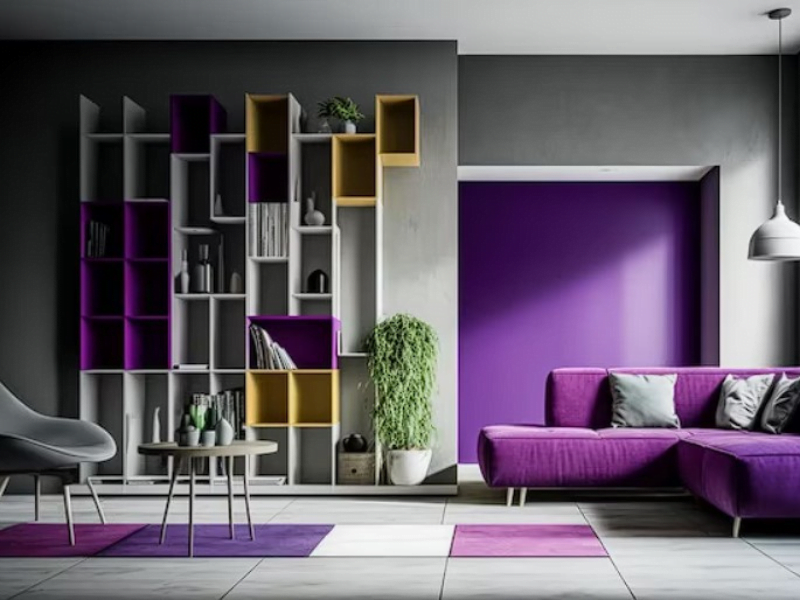
If you want to make a statement, opt for tiles with bold patterns or vibrant colors like red or purple. These can add visual interest and creative flair to your living space.
Features
- Visual Interest: Bold patterns immediately draw attention and can serve as the room’s centerpiece.
- Personal Expression: Vibrant patterns allow you to showcase your personality and unique tastes.
- Dynamic Atmosphere: These tiles create a lively, energetic vibe.
Examples
- Moroccan Patterned Ceramic: Introduces exotic and complex designs.
- Geometric Black and White: This contrasts strikingly and works well in modern settings.
How to Select Tiles for Living Room: FAQs
Answer: Consider room size, existing decor, and personal style. Light colors enlarge a room, while dark ones add coziness. Patterns and colors should complement existing furnishings.
Answer: Measure the area’s square footage and add an extra 10-15% for cuts, breaks, and future repairs.
Answer: Yes, but maintain coherence. Make sure different types have the same thickness and that colors or patterns are within a cohesive palette.

